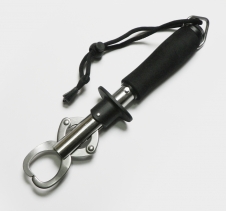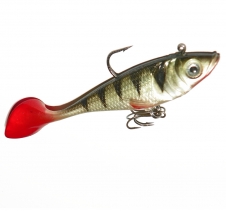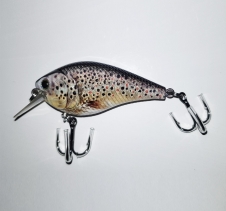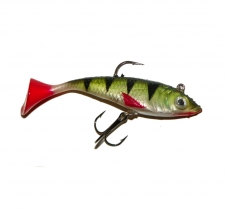Visit Our Online Store! $7 AusPost Parcel Post Delivery FREE Postage for orders $45 and over!
* Shipping rates above apply to Australian Customers only
Western Australia's Superb Salt Water Species.
Dhufish, Breaksea Cod and Samson fishing.
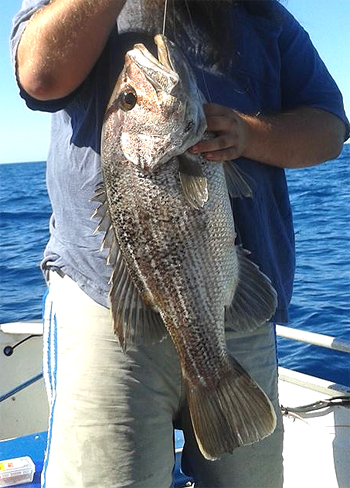
WA Dhufish : ©2014 David Fishlock
Some species are however unknown to the eastern states, some which are found in Western Australia include dhufish, breaksea cod and samson fish. We will introduce you to these species in this article.
West Australian dhufish (Glaucosoma hebraicum)
West Australian dhufish (Glaucosoma hebraicum) are a very large species related to pearl perches. They are endemic to Western Australia, making them a local icon. They are commonly found close to shore and are a bottom dwelling species.
Dhufish have a very large range and are commonly located between Shark Bay and Stokes National Park. Normally, they are found in deep waters up to 50 meters, however a few have been known to be caught in waters as low as 3 meters.
They are a mostly territorial fish, throughout their lifetime they rarely travel far from locations considered home. They can live up to 40 years of age and grow to over a meter in length with a weight of 25kg. They reach reproductive age at 30 - 32cm.
Spawning is produced by eggs between November and April and usually occur over reef outcrops and weed covered sand areas. At these times they can commonly be found in groups.
Dhufish are a predatory species, commonly consuming other fish, crusteaceans, squid and octopus. Closed seasons apply, check with Fisheries WA for details.
Breaksea cod (Epinephelides armatus)
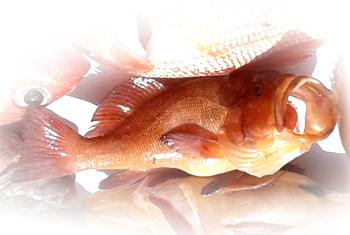
Breaksea Cod : ©2014 David Fishlock
They can be found up to around 55cm and to a weight of 3kg. Most species caught are around 1 to 1.5kg. Most are found at around the 35m depth, and reside in small caves and crevices on the ocean floor.
Breaksea Cod can live to around 20 years, with most encountered by anglers around the 13 year mark. While many other similar cod species found in the region change sex as they grow, Breaksea Cod appears to be born as separate sexes.
Distribution is the same as the WA dhufish, between Shark Bay and Stokes National Park, sometimes reaching a little further east to Esperance.
They can be caught on most bottom fishing rigs using bait and artificial lures. Closed seasons apply, check with Fisheries WA for details.
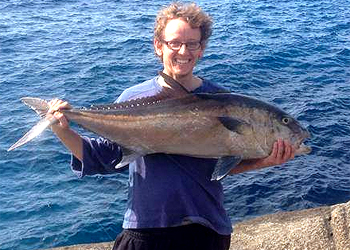
Samsonfish : ©2014 David Fishlock
Samsonfish were named after the biblical figure Samson, whom was granted superhuman strength from god. This species is a large predatory fish found in the open waters off WA.
Samson fish are related to yellowtail kingfish and amberjacks, they are found in patchy distributions within Queensland and New South Wales, but are most well known in Western Australia due to their distribution in this state being confined to the south west region, again starting from Shark Bay, though this species can be found as far east as the Torke Peninsula in South Australia.
Samson fish start their life a blotchy brown colour, this colour fades as the fish grows older, only well advanced adults are purely silver.
The force these fish exert is so strong that extremely heavy line is required to sustain their fighting ability, this makes them regarded as a world class sporting fish, and are targeted by daring fishermen across WA.
As their numbers are on the decline, low bag restrictions are in place to ensure their survival, however they are very commonly caught for catch and release purposes, involving of course, the quick photo.
The Samson fish can be found in schools or close groups during spawning season throughout Autumn (or fall for American readers). Spawning of WA species occur around Rottnest Island, and this is the point in which the fish will group towards and away from during this time.
During spawning phase the fish rarely consume much food, as to provide more space for their breeding capacity, while they can still be caught by jigging large metal spoon lures, fish caught during spawning may be in poorer condition than those caught outside of these times. Placing the fish through less of a fight (if possible) along with a careful release during this period is highly recommended.
Regarding the above, the West Australian Government has released the following piece of information: "Information about catch and release techniques specifically developed for Samson fish can be found in Fisheries Occasional Publication No. 43: Catching and caring for Samson fish (Seriola hippos), which is available on the Department of Fisheries website at www.fish.wa.gov.au".
We hope this article has been informative and of some inspiration. We wish you all the best should you decide to target such species while in Western Australia.
Follow us on twitter: @FishTackleLures or Google Plus: +FishingTackleLuresAU
View more articles in our Australian Fishing Guide.
Enter your email address below to be updated on new fishing articles, fishing lures and special offers:
We will only email once every two to four weeks at the most, usually every 2 months.
POPULAR PRODUCTS IN OUR ONLINE STORE


